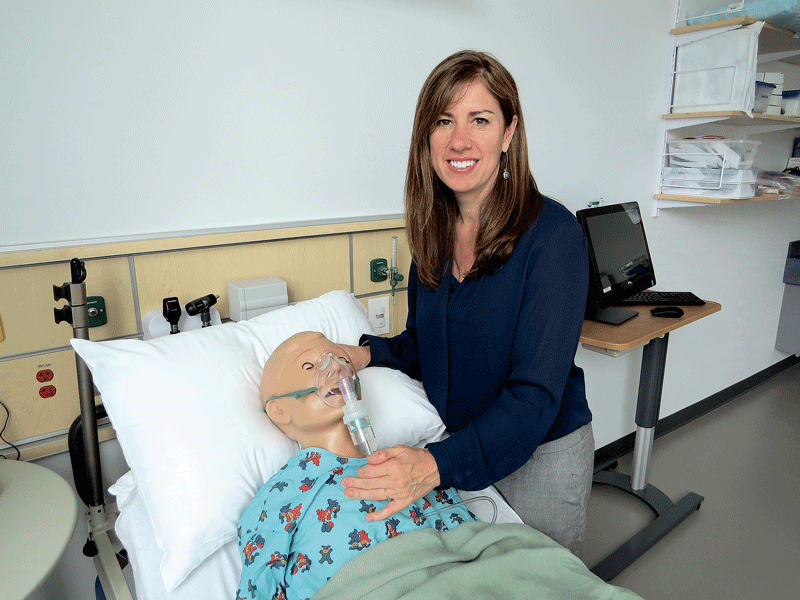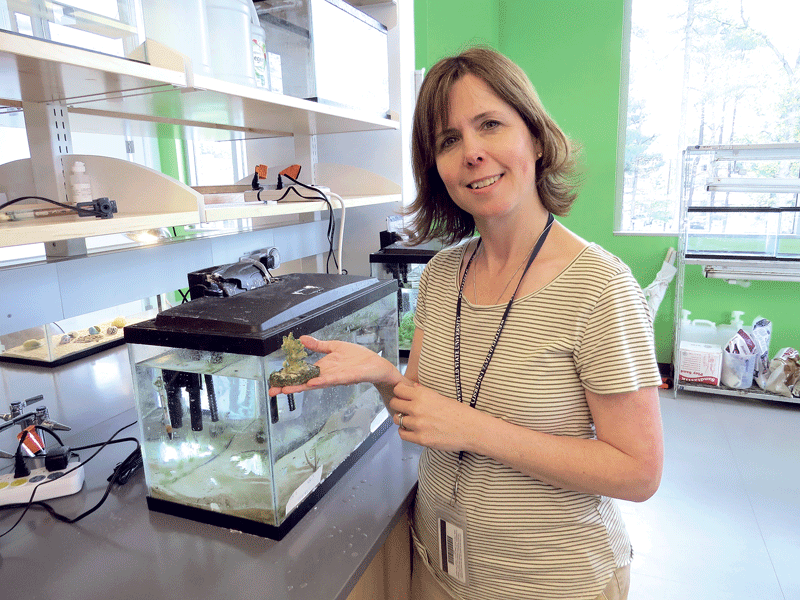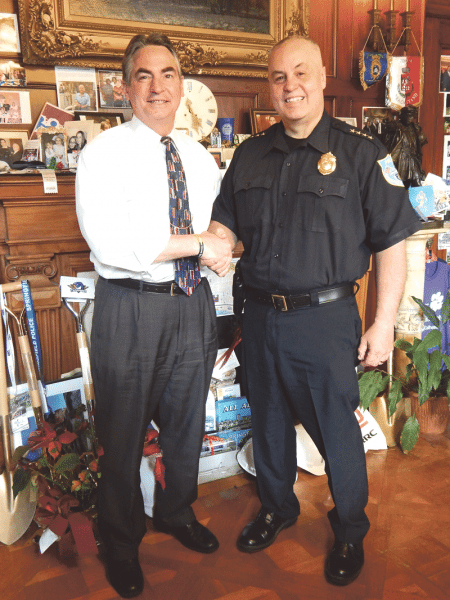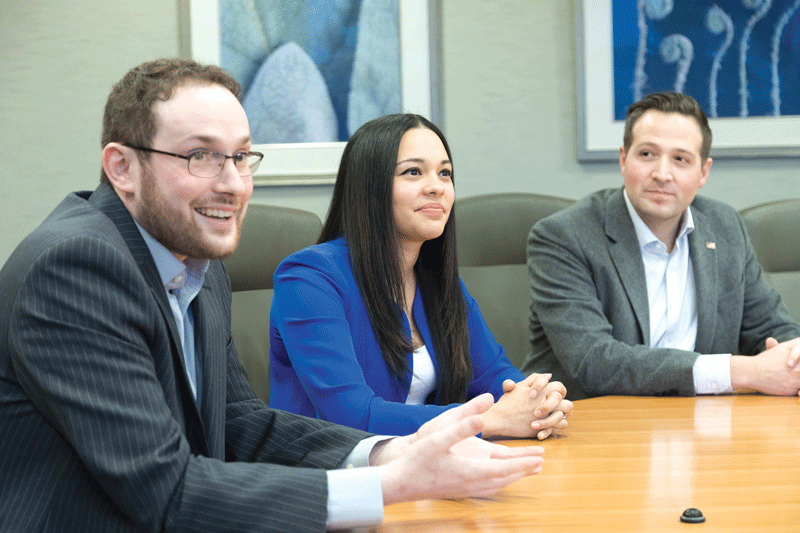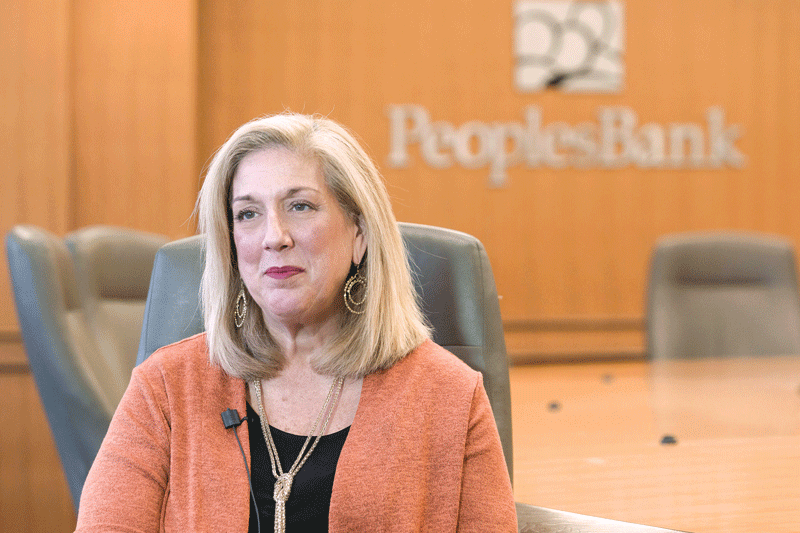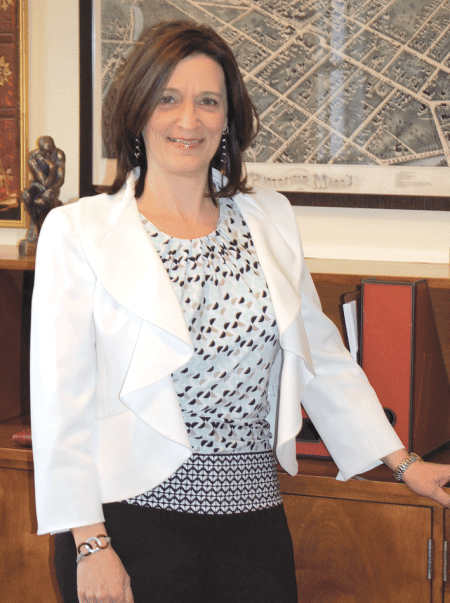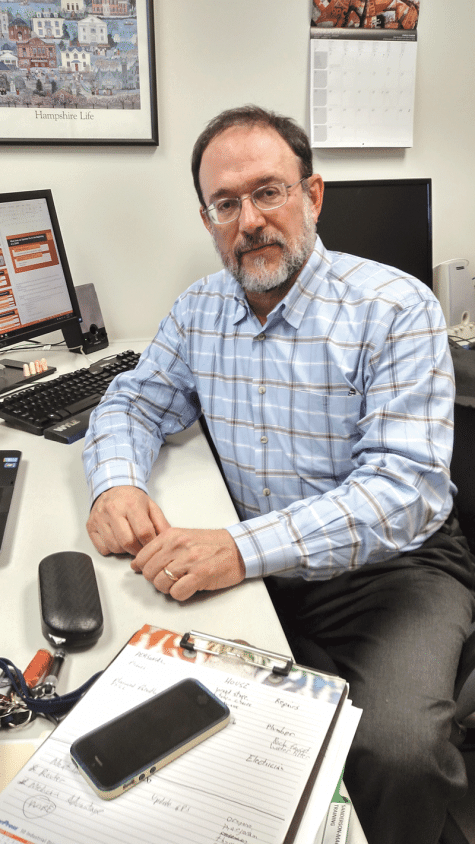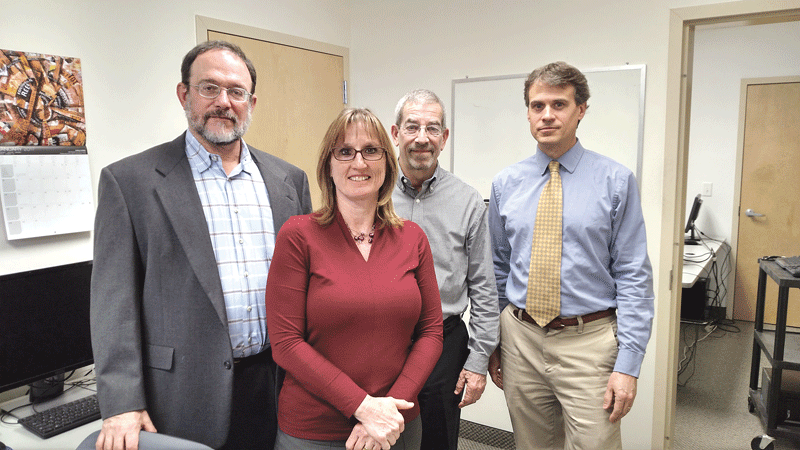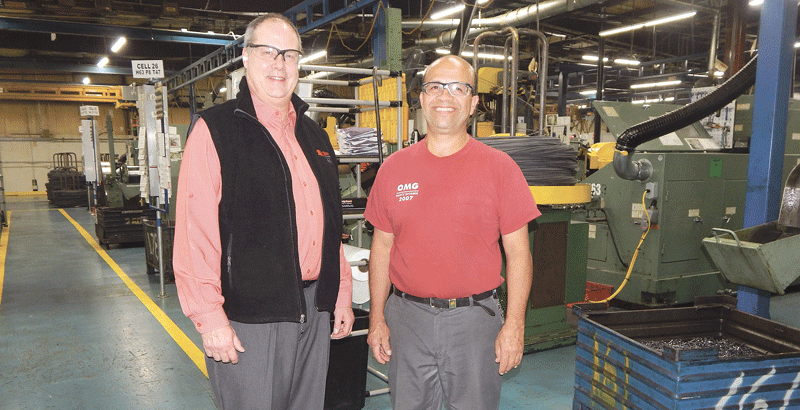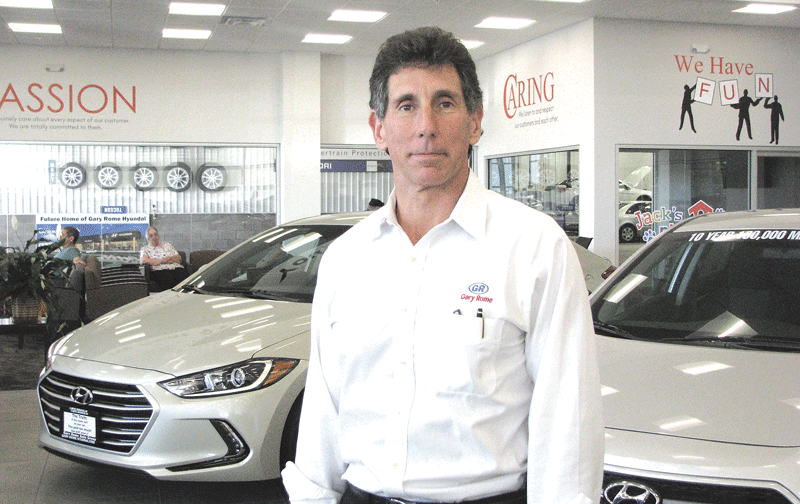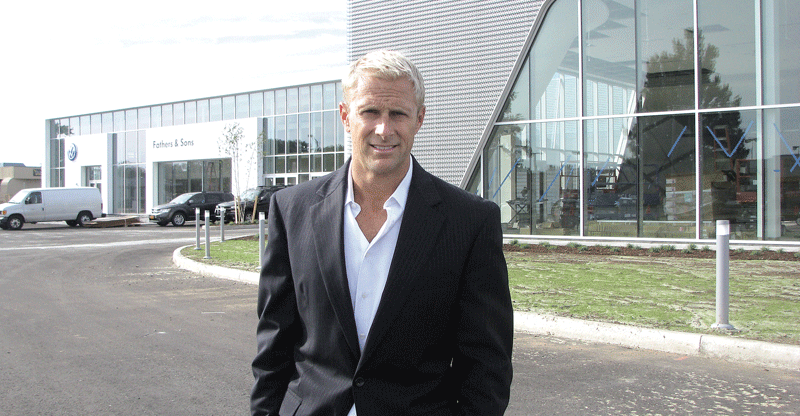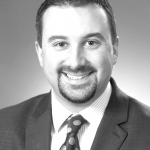Community Spotlight
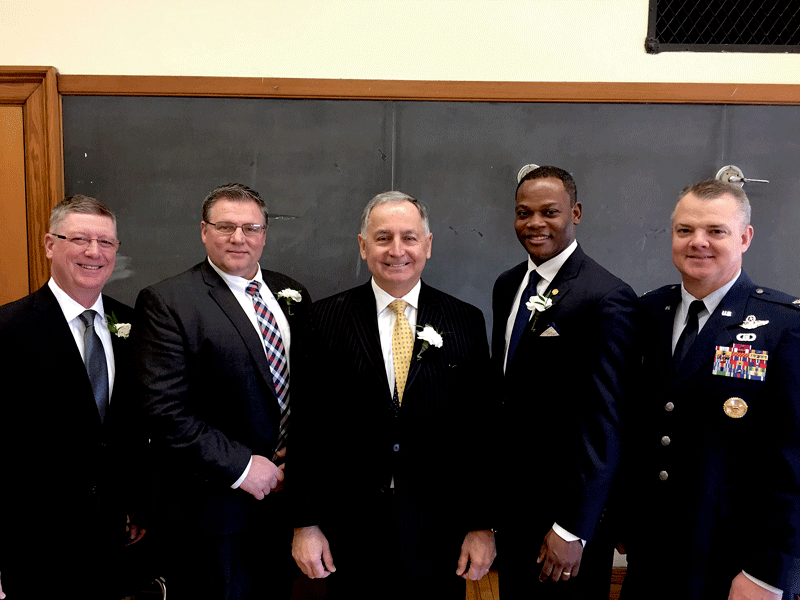
At last week’s inauguration of Chicopee officials, Mayor Richard Kos (center) is flanked by, from left, state Rep. Joseph Wagner, City Council President John Vieu, Elms College President Harry Dumay, and D. Scott Durham, Airlift Wing commander at Westover Air Reserve Base.
Mayor Richard Kos is fond of pointing out that Chicopee is alone among Western Mass. communities in having two exits off the Mass Pike — and now it has a third ‘beacon’ of sorts, as he calls it, with the new Mercedes-Benz dealership lighting the night as it overlooks the Pike at exit 6.
“One of the benefits of Chicopee is its convenience, as well as being a great place to do business,” Kos told BusinessWest. “That’s why Mercedes chose to build in that location. Having two exits on the turnpike is unique in Western Mass., let alone being close to four interstates — 90, 91, 291, and 391. As time goes by, society changes, especially in terms of technology, but being able to get places quickly is always a priority.”
In that vein, the mayor is gratified by a number of businesses choosing to locate or expand in Chicopee, as well as a raft of municipal projects and public-private partnerships that continue to raise the quality of life in this multi-faceted community of more than 55,000 people.
“Last year’s announcements have become this year’s ribbon cuttings, and Mercedes is one of them,” he said. “They’re a beacon advertising quality and prestige for everyone who enters the city off the turnpike or 291. That’s a major investment in the city — $12 million for acquisition, demolition, and construction. And Tru is another $15 million investment in our community.”
That would be Tru by Hilton, another major project, this one bordering the Mass Pike at exit 5. The owners of a Days Inn demolished the outdated hotel on Memorial Drive to make way for the new structure, and the property will include a fast-foot restaurant, a gas station, a coffee shop, and a sit-down restaurant.
“For people coming to Western Mass. from the eastern part of the state, these projects send a nice message,” Kos said — that message being that things are happening in Chicopee. “We’re a community that has always been responsive to businesses, with the conveniences we afford, while still being a very competitive community in terms of electric rates, taxes, and fees.”
Chicopee
at a glance
Year Incorporated: 1848
Population: 55,298
Area: 23.9 square miles
County: Hampden
Residential Tax Rate: $18.31
Commercial Tax Rate: $34.65
Median Household Income: $35,672
Median Family Income: $44,136
Type of Government: Mayor; City Council
Largest Employers: Westover Air Reserve Base; J. Polep Distribution Services; City of Chicopee; Callaway Golf Ball Operations; MicroTek
* Latest information available
Other success stories involve long-time businesses like Callaway Golf, which sits on the Meadow Street property synonymous with Spalding for many decades.
“Callaway not only chose to remain here and expand here, but with their Chrome Soft ball and all their other high-end balls, they’re running a 24-hour, seven-day operation to keep up with demand,” the mayor said. “That’s one of the fastest-growing balls in use on the tour, and we’re proud that it’s made in Chicopee.”
One key, he went on, whether dealing with new businesses or existing ones that want to expand and invest, is streamlining the permitting process.
“We’re trying to be responsive to business needs and timing,” Kos said. “A lot of times, government has a pace that leaves a little bit to be desired, and we want to make sure that doesn’t happen in our city. Chicopee has a history of being extremely business-friendly and responsive. You come in and meet all the boards at once — fire, electric, building, water, all the various departments you need — to have your ideas vetted and see what issues might arise, and to make sure your project goes smoothly. Time is money.”
Downtown Rise Up
At the same time, money is an investment — at least, that’s the way municipal leaders see it as they continue to raise the profile of Chicopee’s downtown. Those investments range from a $2.6 million MassWorks grant to improve water and sewer infrastructure to Mount Holyoke Development’s housing project at Lyman Mills, set to open this spring with 110 market-rate units — specifically, loft-style work/live spaces designed to appeal to young entrepreneurs.
Kos hopes that development and others like it — such as Valley Opportunity Council’s renovation of the former Kendall House into 41 affordable studio apartments — spur further restaurant, bar, and retail development and create a more walkable, active downtown. Community events, such as the city’s holiday tree lighting, Halloween spectacular, and the late-summer Downtown Get Down, just add to that effort.
“We want foot traffic and to get more people down there, which is why we’re investing time and effort to get people to live down there, and make it safer, too,” he added, noting that the City Council recently approved $300,000 to add more cameras downtown and throughout the city to fight and, more importantly, deter crime.
“Our cooperation with the City Council has been remarkable. And the city leaders and the state delegation have worked together to solve problems, come to a consensus, and move forward.”
Meanwhile, at the former Facemate site, David Spada from Lawrence is building a $21 million, 92-room assisted-living facility on a West Main Street parcel across from the Chicopee Falls Post Office, situated off a new road which leads to the RiverMills Senior Center. Ground will be broken this spring.
“So we’re providing opportunities for Millennials to live and work in lofts on one end of the city,” Kos said, “and assisted living on the other.”
Other innovative reuse of property includes a three-megawatt solar farm on a 26-acre site off of Outer Drive and Goodwin Street, near Westover Air Reserve Base. In 2016, the city razed 100 units of military housing units on the site, which had sat unused for two decades and become problematic.
Once a solar farm was approved by neighbors and city leaders, Chicopee was awarded a $1 million MassDevelopment grant to remediate the property, and with money came from the state’s grant program to support the Clean Energy Assessment & Strategic Plan for Massachusetts Military Installations, the housing was finally torn down. Finally, a lease agreement was signed with Chicopee Solar LLC, a subsidiary of ConEdison Development, to build a solar farm.
The city’s investment will be recouped in 10 years through tax revenue and income from the lease agreement, and the government will also benefit because Westover will receive a 5% discount each year on electricity, amounting to $100,000 in annual savings.
“Those properties were deteriorating and vagrant,” Kos told BusinessWest. “This was a win-win for the neighborhood as well as the city.”
Hometown Appeal
Other recent quality-of-life developments in the city include a $225,000 investment in Sarah Jane Park, a grant to the Valley Opportunity Council to support a culinary-arts program and expand nutrition programs in Willimansett, and grants to Porchlight, the Boys & Girls Club, and Head Start to improve infrastructure and programming. For the latter, the city helped leverage more than $600,000 in building improvements to the former Chicopee Falls branch library so Head Start can expand programs for hundreds of children in that neighborhood.
Meanwhile, the city’s public-safety complex recently saw $9 million in improvements, including a new training facility, central dispatch, and locker rooms. “Both chiefs agree that facility will last multiple generations in terms of the improvements made there,” Kos said, adding that other additions include a new ladder truck and an expansion of the police K9 program.
Not all these developments have the splash of a well-lit Mercedes-Benz dealership making a dramatic impression on Mass Pike motorists, but they are all beacons in their own way, testifying to a city on the move, and also a community with plenty of hometown pride.
“We’re the third-largest city west of 495,” the mayor concluded, “but it’s the old Cheers bar mentality — everyone seems to know your name.”
Joseph Bednar can be reached at [email protected]




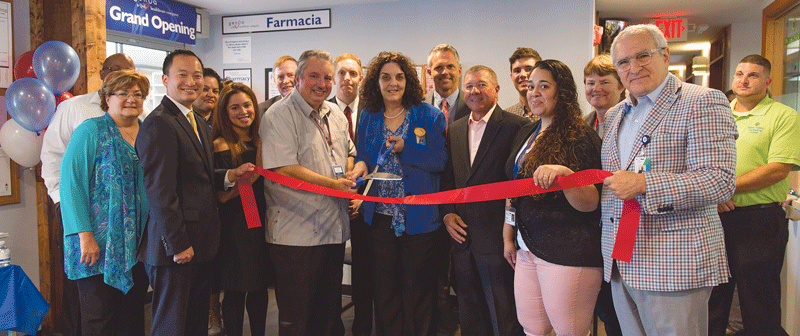
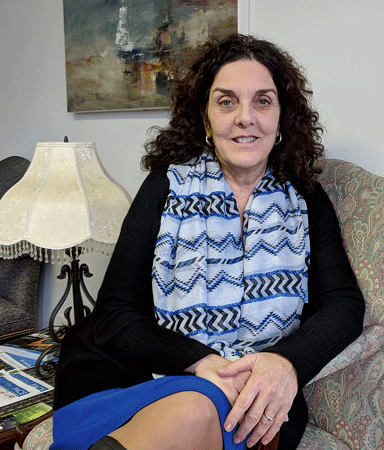
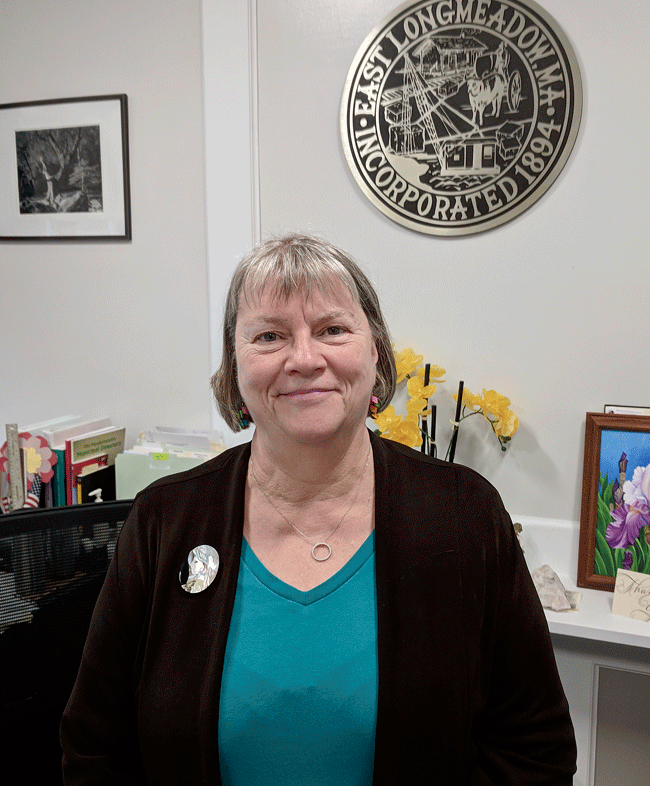
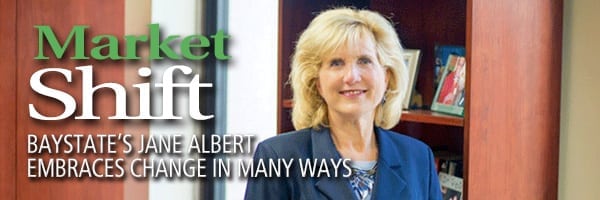
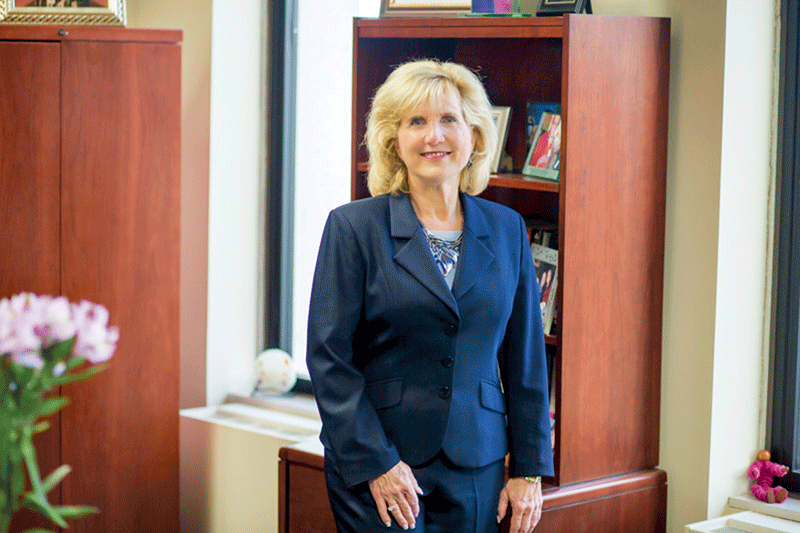
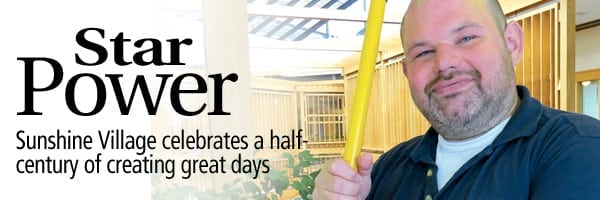


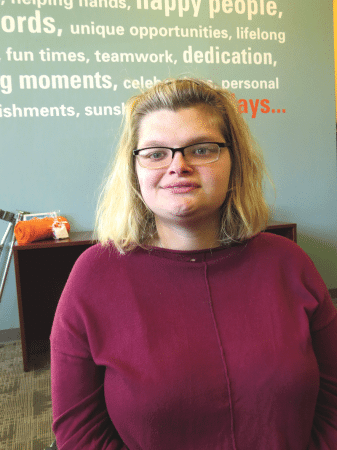
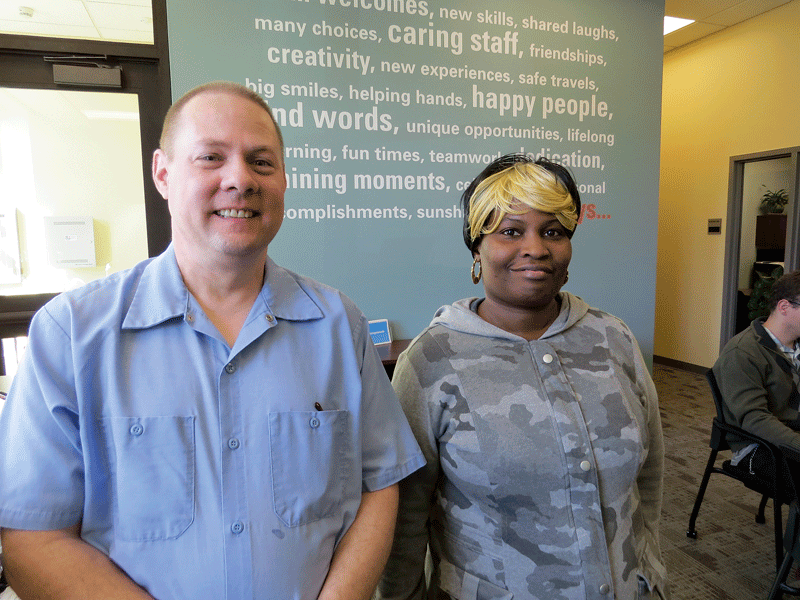




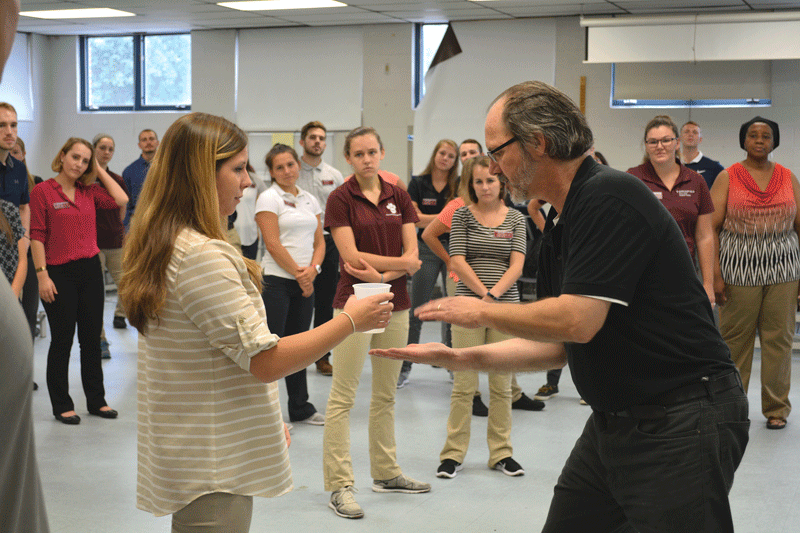


 The rising temperatures are a great reason to have fun outdoors. But those summer activities pose myriad dangers, from sunstroke to tick-borne illnesses to drowning. Fortunately, most of these risks can be reduced and even eliminated through proper planning and common sense.
The rising temperatures are a great reason to have fun outdoors. But those summer activities pose myriad dangers, from sunstroke to tick-borne illnesses to drowning. Fortunately, most of these risks can be reduced and even eliminated through proper planning and common sense.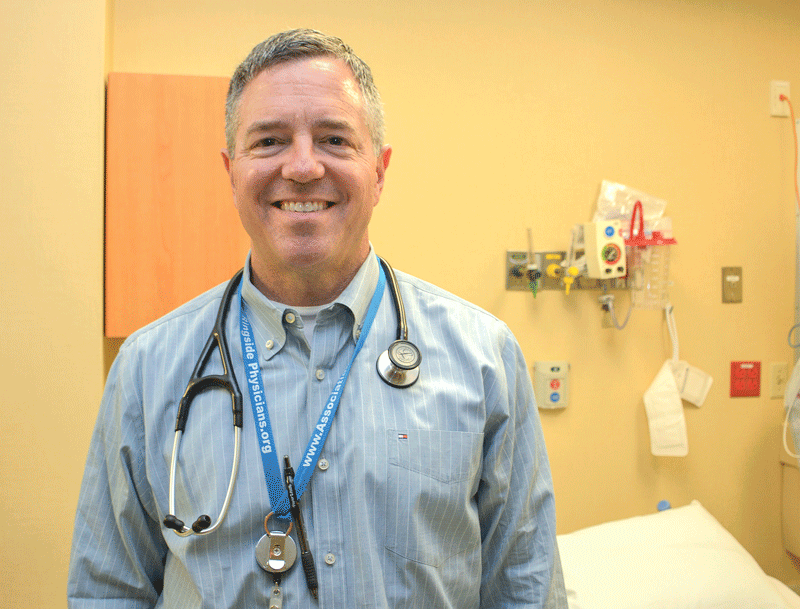
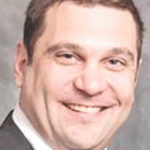

 Summertime is a great time to get away, but in Western Mass., it’s also a great time to stick around and enjoy the many events on the calendar. Whether you’re craving fair food or craft beer, live music or arts and crafts, historical experiences or small-town pride, the region boasts plenty of ways to celebrate the summer months. Here are 35 ideas to get you started, in a region that’s home to many more.
Summertime is a great time to get away, but in Western Mass., it’s also a great time to stick around and enjoy the many events on the calendar. Whether you’re craving fair food or craft beer, live music or arts and crafts, historical experiences or small-town pride, the region boasts plenty of ways to celebrate the summer months. Here are 35 ideas to get you started, in a region that’s home to many more.
 Monson Summerfest
Monson Summerfest Old Sturbridge Village Craft Beer & Roots Music Festival
Old Sturbridge Village Craft Beer & Roots Music Festival Springfield Jazz and Roots Festival
Springfield Jazz and Roots Festival Westfield International Airshow
Westfield International Airshow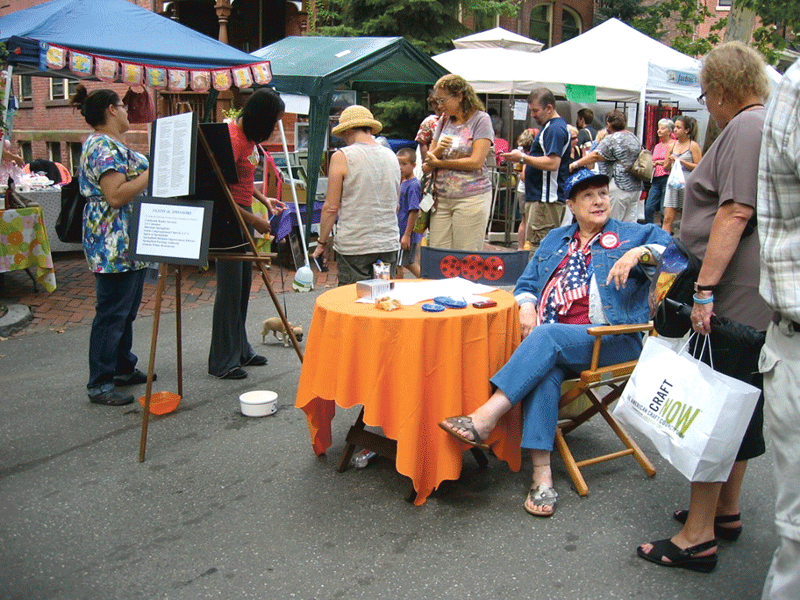 Mattoon Street Arts Festival
Mattoon Street Arts Festival The Big E
The Big E

